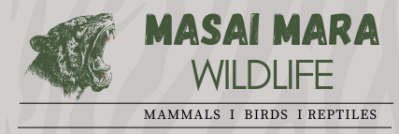- Common Name: Dwarf Mongoose
- Scientific Name: Helogale parvula
- Swahili Name: Kitafe
- Maasai Name: Ekisherini
- Size:
- Head-Body Length (HBT): 35 cm (14 inches)
- Gestation: 5–6 weeks
- Recognition: The Dwarf Mongoose is the smallest species of mongoose, easily recognized by its rusty-brown coat and long tail. With its small, agile body, it might be mistaken for a reddish squirrel at a glance.
Habits and Behavior
- Diurnal and Terrestrial: Dwarf Mongooses are active during the day and spend most of their time on the ground, foraging for food or interacting with their clan.
- Gregarious: These mongooses are highly social, living in family groups or clans of 10–25 members, led by a dominant pair. The dominant pair is usually the oldest in the group and has exclusive breeding rights, while other members of the clan help raise the pups.
- Highly Vocal: The Dwarf Mongoose is a vocal animal, using a range of sounds to communicate. If danger is near, one will emit a high-pitched “pissoo” to alert the clan before quickly retreating into cover. When relaxed, gentle piped whistles can be heard, while confrontations between individuals may involve low growls.
Social Structure
- Cooperative Care: In addition to the dominant pair, other clan members contribute to raising the young. Subordinate females may help suckle the pups, ensuring the group thrives collectively. Males are typically ejected from the group when they reach maturity and must join another clan, while females stay and await their chance to become dominant and breed.
- Sleeping in Groups: For safety and warmth, Dwarf Mongooses sleep in groups, often in termite mounds or hollow trees, where they are protected from predators during the night.
Habitat
- Where to Find: Dwarf Mongooses are most commonly found in savanna and riverine woodland habitats within the Masai Mara. They particularly favor areas with plenty of termite mounds, which they use both for shelter and as lookout points. Termite mounds also provide a secure place for raising their young.
Diet
- Feeds on: Dwarf Mongooses are insectivores, with a diet that primarily consists of invertebrates like insects, but they will also hunt small reptiles and other tiny creatures they come across while foraging.
Conservation Status
- IUCN Status: Least Concern. The Dwarf Mongoose is widespread across sub-Saharan Africa and is not currently facing any significant threats. Its population is stable, thanks to its adaptability and presence in a variety of protected areas, including the Masai Mara. However, like all wildlife, habitat destruction and human encroachment could pose potential threats in the future.
Interesting Facts
- Mini-Mongoose with Big Social Life: Despite being the smallest mongoose in East Africa, Dwarf Mongooses have a complex social structure with cooperative breeding and care for the young.
- High Energy, High Alerts: Their quick movements and constant vigilance make them excellent at avoiding predators. Their high-pitched warning call is a distinctive feature that helps them communicate danger quickly to the clan.
- Termite Specialists: While they eat a variety of small creatures, termites make up a significant portion of their diet. They are expert foragers, using their nimble paws to dig into termite mounds and extract their meals.
In conclusion, the Dwarf Mongoose is a fascinating, social, and highly adaptable carnivore of the Masai Mara. Its unique cooperative living and foraging habits make it an important species within its ecosystem. Although currently listed as Least Concern by the IUCN, ongoing conservation efforts to protect their habitats are essential to ensure the long-term survival of this tiny mongoose.
